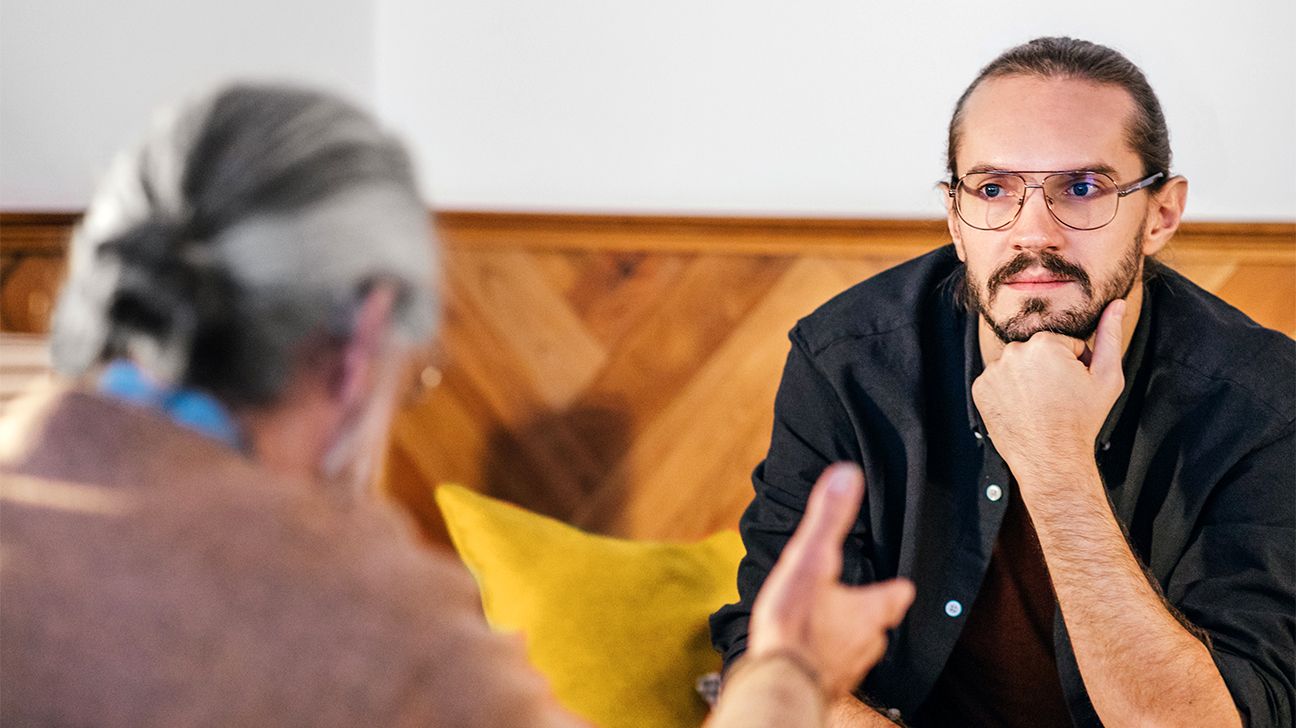Anyone who has experienced childhood trauma knows you don’t magically “get over it” when you grow up. Problems from the past can impact your well-being in adulthood and even spill over into your relationships.
However, there are effective ways to deal with old traumas — and a big one is therapy. Despite some of the stigmas attached, getting help from a therapist is a winning move, not a failure.

Responses to trauma vary from person to person. Whether you feel like you’ve thoroughly responded to a traumatic event as it happens or not until long after it ends, it will most likely be a process to fully work through your experience.
Children who have experienced trauma can benefit from therapy as well. However, therapy will look different for kids, adolescents, and adults.
Adults are treated primarily with talk therapy.
Signs you may need help dealing with childhood trauma
- feeling anxiety, sadness, fear, worry, anger, resentment, or irritability
- crying a lot
- trouble thinking clearly
- flashbacks
- nightmares or trouble sleeping
- avoiding places and people or becoming isolated
- physical symptoms like headache, stomach ache, tiredness, racing heart, sweating, or being easily startled
- hyperarousal
- maladaptive coping (i.e. addictions, eating disorders, self-harm)
- interpersonal instability
- shame or distorted self-perception
Therapy for younger kids is more about the therapist observing while the child engages in therapeutic play, and initiating conversation as the child becomes more comfortable.
Teens may have therapy sessions one-on-one with a therapist, in a group of other teens, or with family members present.
Signs that a child may need therapy
- Small children who experience trauma may:
- wet the bed
- stop talking
- reenact the trauma while playing
- cling to a parent or other adult
- Older kids and teens may:
- become disruptive
- have feelings of guilt
- become vengeful
Regardless of age, talking with a therapist can help you pinpoint the source of your problems and help you to develop coping skills.
Experiences that can cause childhood trauma include:
- neglect
- physical, sexual, or psychological abuse
- natural disasters
- community violence
- domestic violence
- accidents, illness, or death
- experiences related to war or military service
Having ties to any of these events can lead to conditions such as depression, anxiety, obsessions, or compulsions in childhood or later in adulthood.
The American Academy of Family Physicians recommends therapy (like cognitive behavioral therapy, aka CBT, and interpersonal therapy) for children and adolescents with mild depression and a combination of therapy and medication for adolescents with moderate to severe depression.
Evidence also indicates cognitive behavioral therapy and other psychotherapies are effective for treating anxiety in children and adolescents.
In one study, children who received play therapy while hospitalized (an experience that can be traumatic) had lower levels of anxiety. Cognitive behavioral therapy with exposure and response prevention has also been shown to be an effective treatment for pediatric obsessive compulsive disorder.
There’s growing evidence that a type of therapy called eye movement desensitization and reprocessing (EMDR) is an effective treatment for both children and adults who experienced complex childhood trauma (repeated traumatic events over time).
According to the American Psychological Association, two simple questions can help you decide if you need therapy:
- Does the problem cause distress? You spend time every week thinking about the incident, you are embarrassed by it, your quality of life is lower because of it.
- Is it interfering with any part of your life? Has it impacted your professional or educational goals? Do you have to switch up how you do things because of this problem?
To find a therapist for yourself, ask your primary doctor, friends, and family for recommendations. If you have a child that needs therapy for trauma, talk with your child’s doctor, school counselor, or spiritual leader for therapist recommendations.
While social distancing is encouraged, you might wonder if it’s safe to visit a therapist’s office. It’s very likely you won’t have to. Many therapists are offering virtual sessions, and your insurance may cover it.
There are also plenty of apps to hook you up with a licensed therapist for virtual therapy. In a review of 25 studies published between 2000 and 2017, researchers concluded that internet- or telephone-based therapy is comparable to conventional in-person therapy.
Internet therapy is also usually less expensive and more widely available to people in communities without a therapist on every street corner.
Check potential therapists’ websites to see if they specialize in treating childhood trauma. Then schedule a consultation to see if they’re a good fit for you or your child.
When you “interview” potential therapists, share as much about your experience and emotional struggles as you feel comfortable with.
Forging a connection with a therapist takes time, and it’s perfectly acceptable to go at a pace that feels right for you as the therapist gains a better idea of how they may be able to help.
Ask about rates, whether they take insurance, and about sliding scales if you’re paying out of pocket. Ask the therapist what kind of therapy techniques they plan to utilize so you can decide if it’s right for you.
It can be difficult to predict the length of treatment. Therapy can be effective after 3 months, or it can take up to 18 months. For chronic or severe mental health conditions, therapy could be a long-term commitment.
It all depends on your situation, your goals, and the type of treatment your therapist provides.

